The Fascinating Introduction To Molting In Chickens
If you have long periods of time that your laying hens are unproductive, meaning they stop laying eggs or only produce a few.
Looks like you may have molting in chickens time, and you may need to keep records and observe molt times for each chicken.
So how do you know when your chickens are molting…
Well.
That’s not hard because it typically looks like a feather pillow has exploded in the coop.
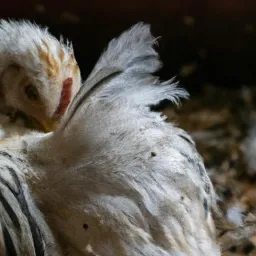
There are feathers everywhere, and you can see the spots as listed below, where feathers are missing on the bird.
Study these patterns in your flock, and when you get new chickens in, try to ask the seller questions about this molt behavior.
If he or she is concerned with egg production, they will already know their flock’s molt patterns.
What Does Molting In Chickens Look Like
Every year, chickens molt.
That’s the way it is…
These timely occurrences are not hard to see when you look at your once beautiful and fluffy chicken that is losing its feathers with bold patches and a poor sight it is too…
They lose their old feathers and gain new ones.
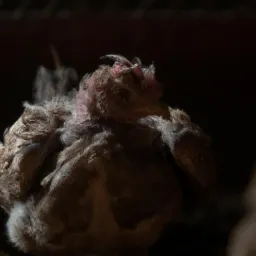
You will eventually see the start of new feathers, the central shaft of the chicken’s new feathers appears first, then the feathers will come out of this.
It’s a bit like a chicken porcupine. And not too fluffy to pick up either.
That usually means they also stop laying eggs during this time. Those hens that do continue to lay eggs will have an extended molt time.
There are both early and late molters.
The early molters will only lay for a short period of a few months before they molt, and they aren’t the best layers.
Their feathers during molt will look a little better than the late molters.
The late molters will lay for a year or so before molting, and they are your best layers.
Late molters will have rougher-looking feathers during molt than the early molters.
The loss and regrowth of feathers are consistent, so it is not difficult to notice when it occurs and whether each is an early or late molter.
Early molters will lose only a couple of feathers at a time and may take 4 – 6 months to molt.
Late molters have a shorter molt period of 2 – 3 months and shed their feathers quickly.
Late molters will produce again quickly because the shedding and regrowth of feathers happen at the same time thus shortening their molt period.
See also Why Silkie Chickens are the Perfect Addition to Your Backyard Flock
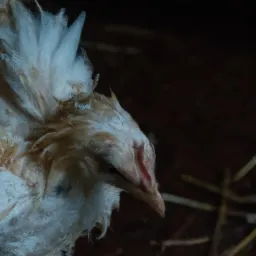
The order that feathers are lost will always be the same as follows:
- Head
- Neck
- Breast
- Body
- Wings – The outer or primary flight feathers are lost first from the center followed by the secondary flight feathers. Late molters will lose primary feathers in pairs or groups and early molters will lose one at a time.
- Tail
If you know your chickens molting patterns, it’s easier to know which chickens are profitable and which chickens are freeloading.
Having chickens in your backyard comes with their natural periods of molting, so when the time for molting comes, and they do look ugly…
Or politely saying not at their best, you could say that there is a positive out of all of this and that is that you could get a bunch of feathers maybe for a pillow.
But you must wash them first and give them good steam so that you get rid of all the little nasties in the feathers.
You will also notice that their wattles and cones will go pale, and they will not feel at their best.
When you think of it, it takes a lot of energy to go through molting, and the body adapts to this.
So it’s no surprise that they also stop laying when all their energy is going into a new feathery suit.
Well…
You change their clothes, don’t you?

So be kind to your chickens at this time, molting in chickens does mean you are probably not going to get a lot of eggs, all you have to do is wait and feed them well.
And they will be right back giving you eggs again.
Feathers and Laughter: How to Help Your Hens Survive Moulting Season
Ah, the joys of moulting season – when your fluffy backyard companions shed more feathers than a pillow fight gone wrong. But fret not, dear chicken-keeper!
With a little care, a sprinkle of humor, and a lot of patience, you can help your feathered friends navigate this transformative time.
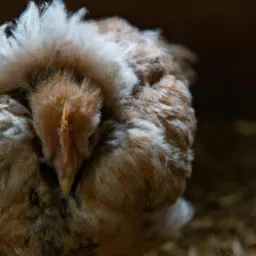
I’ll show you how to support your hens during moulting season, all while keeping a smile on your face and a chuckle in your heart.
- The Feathered Fiasco: Understanding Moulting
- Before we dive into the hilarity, let’s get acquainted with the science behind moulting. Moulting, also known as the “Great Feather Drop,” is a natural process where chickens shed old feathers to make room for new ones. It’s like a glamorous makeover but with more clucking and less makeup. Understanding this process is crucial to helping your hens sail through it smoothly.
See also The Secret Life of Happy Chickens: What They Do When They're Content
- The Molting Makeover: Grooming and Pampering
- Just like any diva, your hens deserve a little pampering during their moulting journey. Treat them to some extra care by providing a balanced diet rich in protein, which helps in feather regrowth. A spa day for your flock may include dust baths to keep their skin healthy and a cozy coop with clean bedding to minimize stress. Remember, happy hens make for happy feathers!
- Fashionably Featherless: Dressing Your Hens to Impress
- During moulting, your chickens will look like they’ve just stepped out of a feather confetti party. While they may feel a little self-conscious, you can help boost their confidence by providing some fashionable accessories. Featherless hens can rock the latest trends, like tiny chicken-sized scarves or even a bedazzled comb. Not only will they feel fabulous, but they’ll also be the talk of the henhouse.
- The Comedy Club: Keeping Spirits High
- Laughter is the best medicine, and your hens are no exception. Entertain them with a comedic routine that would make even the grumpiest rooster crack a smile. Share your best chicken-themed jokes, perform silly dances, or even set up a mini-comedy club near their coop. Remember, a little humor goes a long way in boosting their spirits during this feather-shedding adventure.
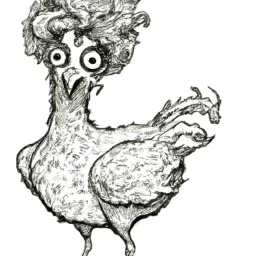
- Feather Friends: Social Support
- Chickens are social creatures, and moulting season can be a vulnerable time for them. Encourage flock bonding by providing ample opportunities for socialization. Arrange playdates with neighboring hens, organize chicken tea parties, or even set up a “Hen Spa Day” where they can preen and gossip. Remember, a strong support network is essential for weathering the molt storm together.
Helping your hens through moulting season can be an adventure filled with laughter, love, and fabulous feather fashion.
By understanding the process, providing extra care, injecting humor into their lives, and fostering social connections, you’ll create an environment that helps your feathered friends thrive during this transformative time.
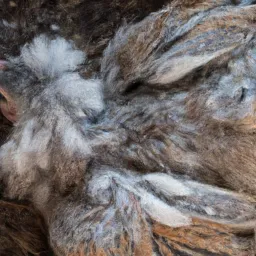
So go forth, dear chicken-keeper, and embrace the molting mayhem with open arms and a hearty laugh.
Your hens will thank you with an abundance of beautiful new feathers and a lifetime of clucking tales to share.
